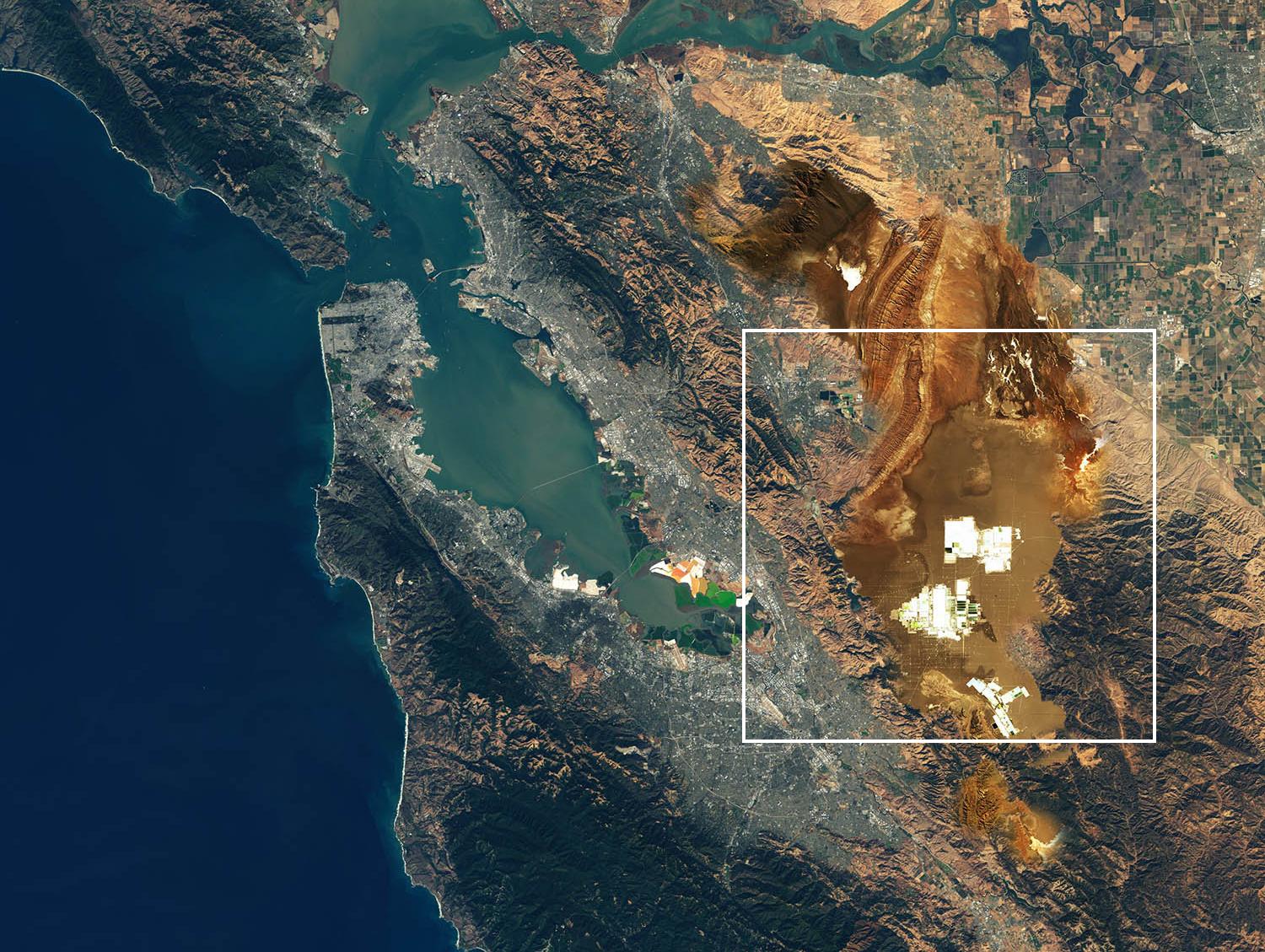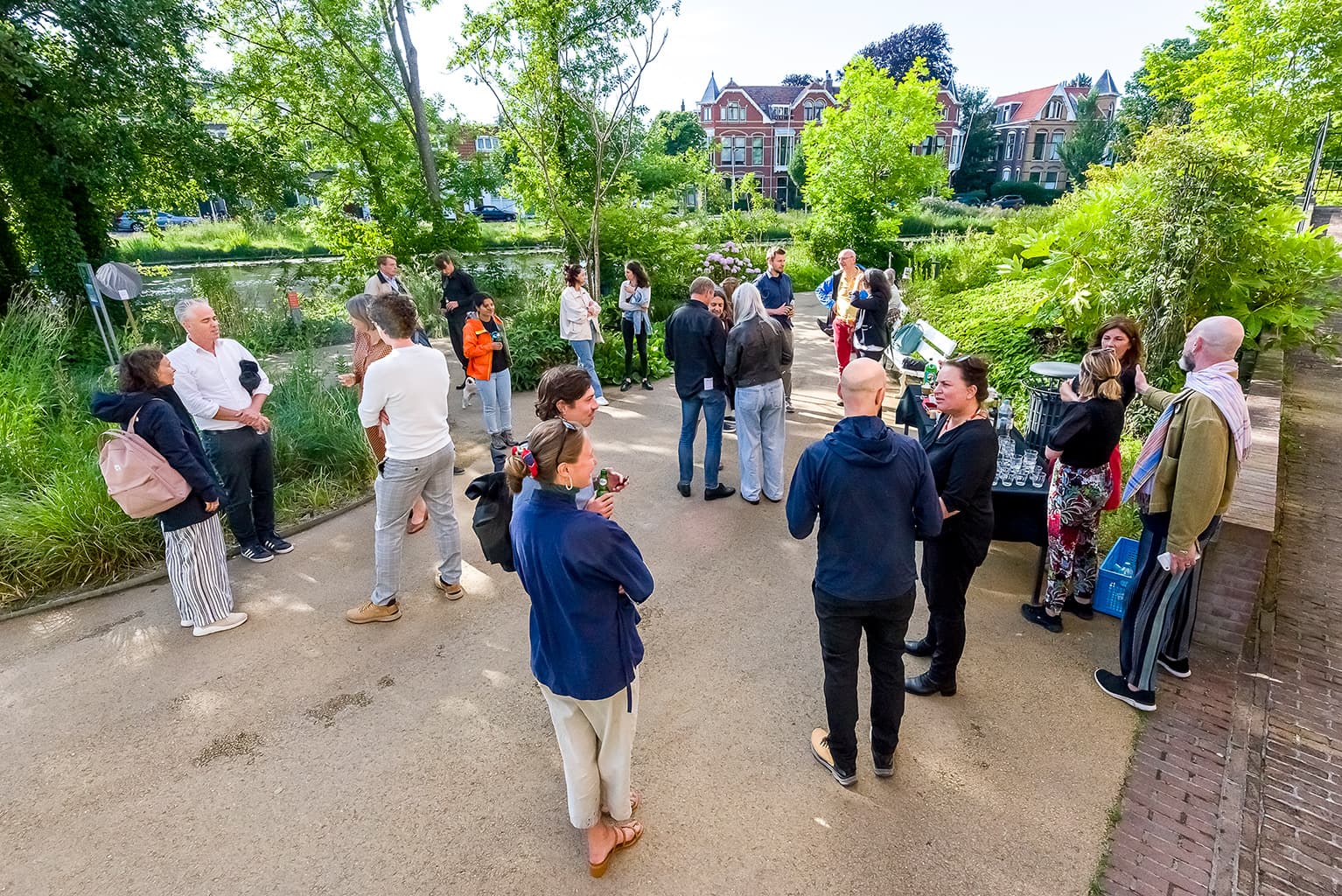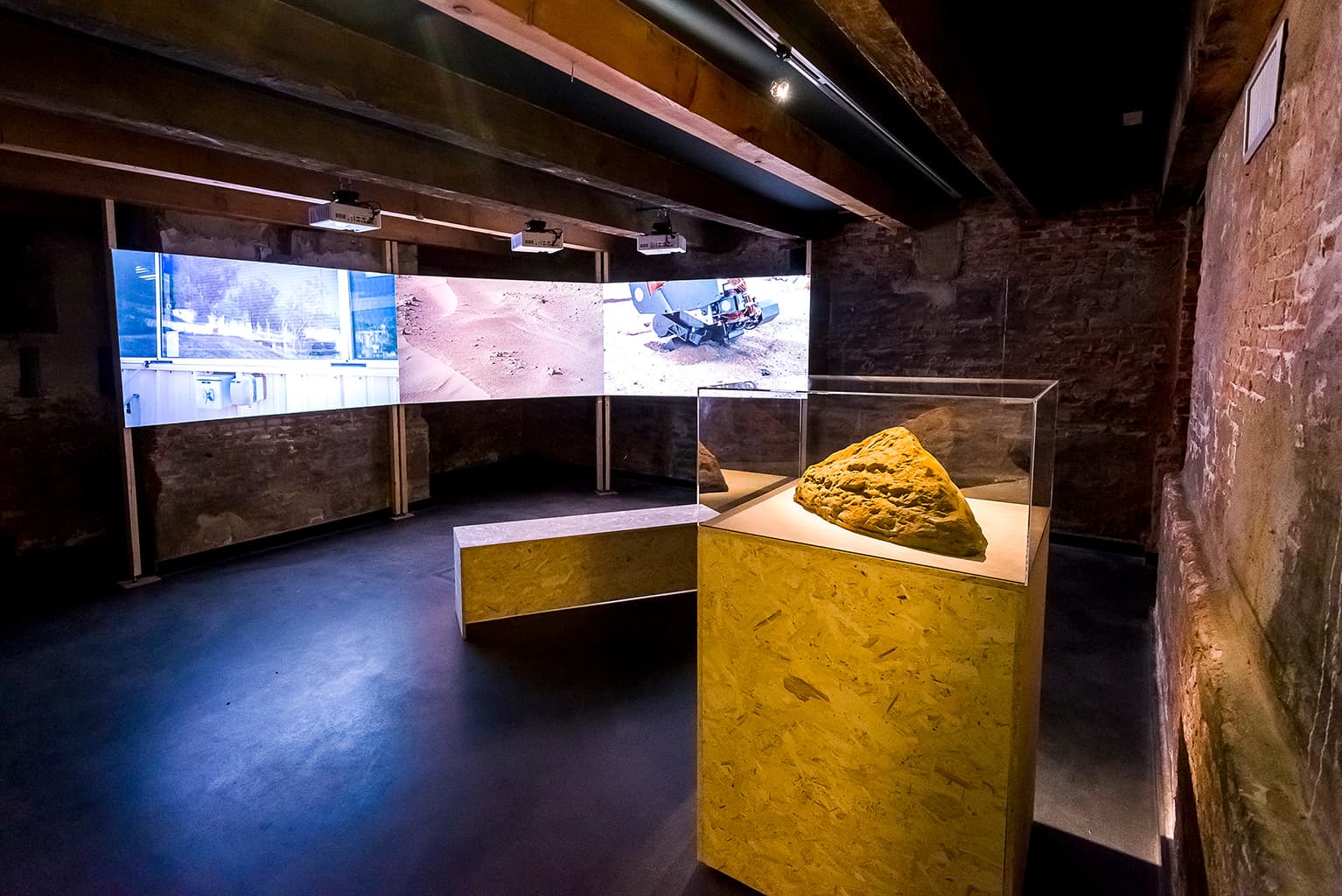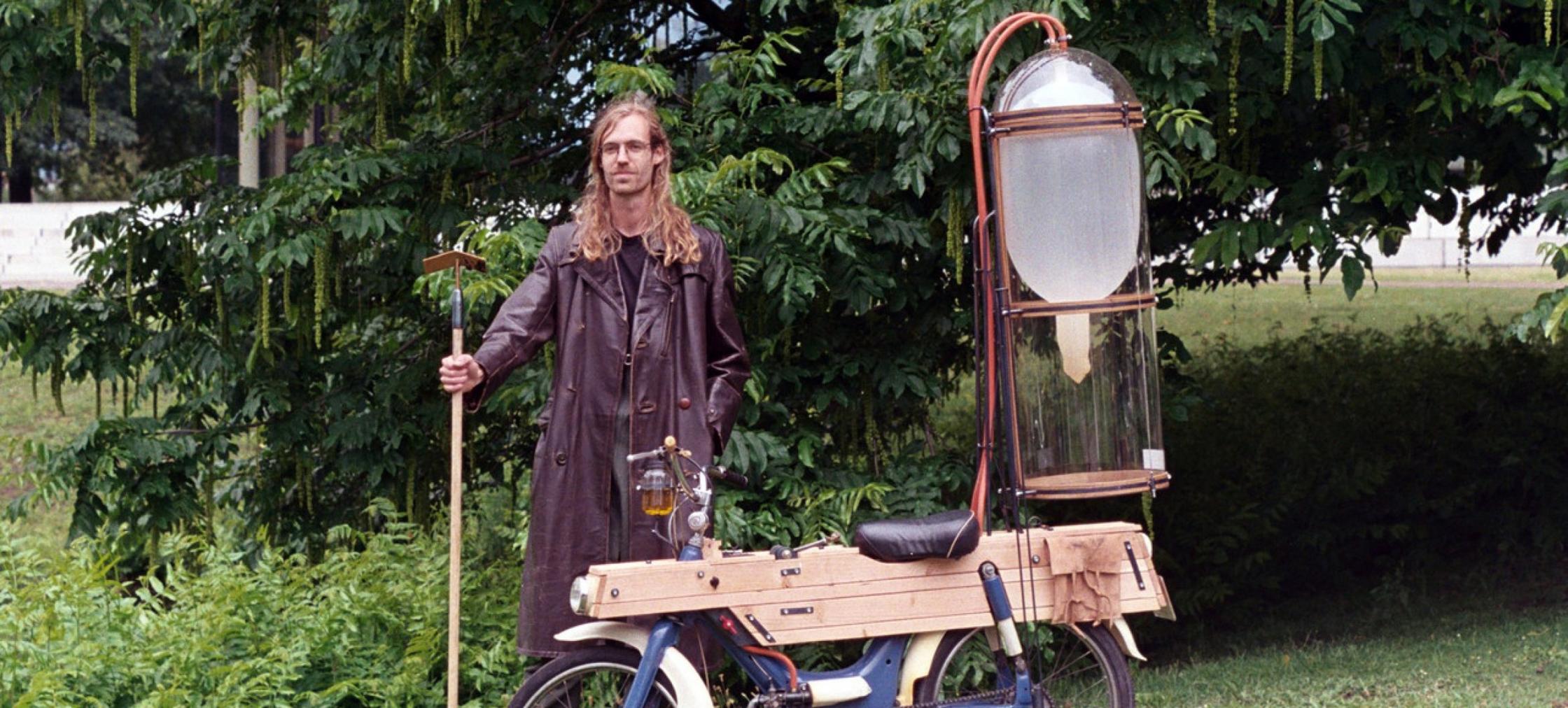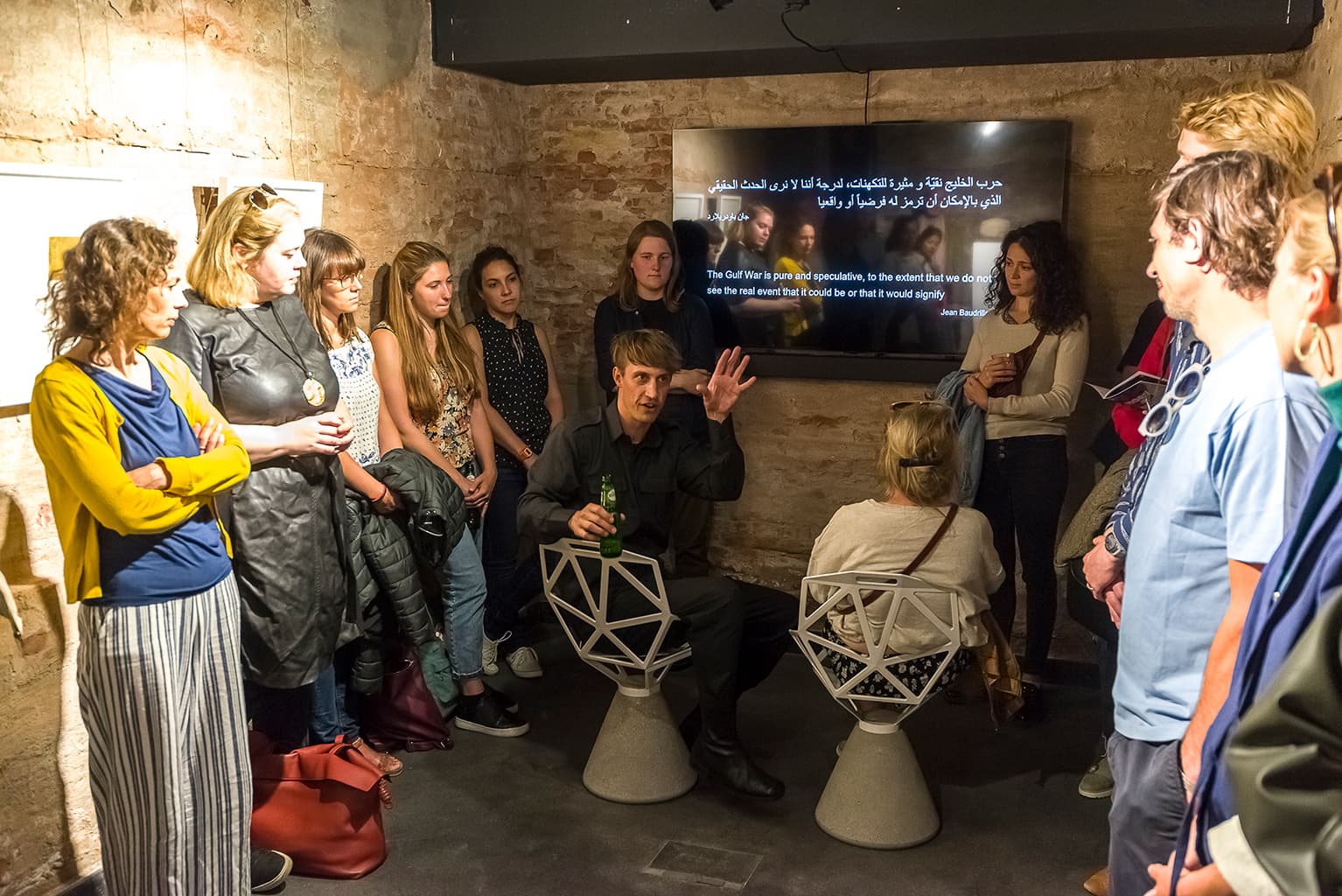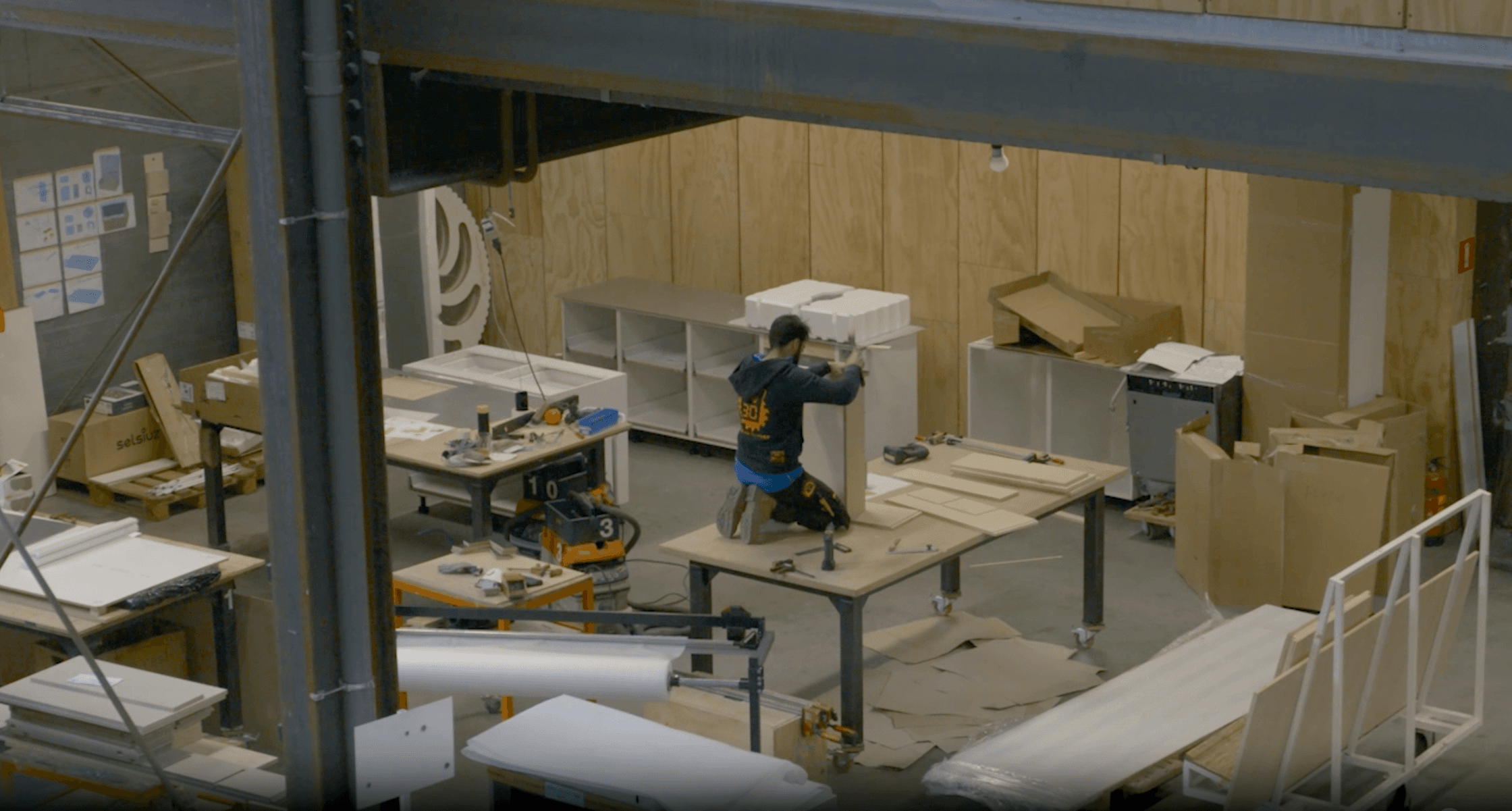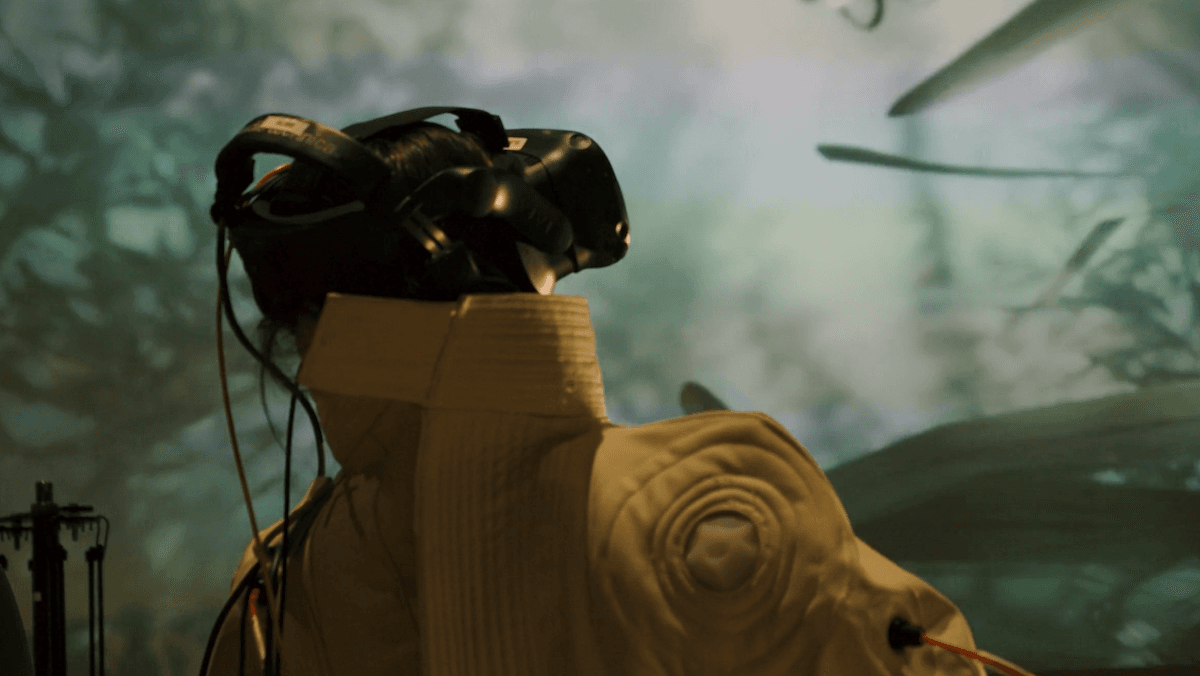It's (almost) your last chance to go and see the More-than-Planet exhibition at Old Observatory (until 23 December)! Join us at the finissage on Friday 16th of December, where invited artists and experts will provide a glimpse at what further activities the international project More-than-Planet (2022 - 2025) will develop.
The finissage features conversations about interactions between artistic research and satellite data research, with presentations by Disnovation (art and research collective) and Space4Good (social enterprise for a better planet and society), and a roundtable discussion joined by Meta Knol (director of Leiden European City of Science) and Frans Snik (Leiden University).
Take a look at the finissage and register.
About the expo
From Friday 1 July 2022 until Friday 23 December 2022, the More-than-Planet exhibition at Old Observatory Leiden showcases five cutting-edge international artists who set off to work in the domain of space. They create alternative visuals, installations and critical narratives to show that other side of the earth. In doing so, the transdisciplinary artworks in the More-than-Planet exhibition aim to spark a discussion about how technologies and the drivers behind their development can help reduce environmental stress.

Works and their artists
Asunder by Tega Brain, Bengt Sjölén, Julian Oliver
Asunder responds to a growing interest in the application of AI to critical environmental challenges. It situates this approach as a literal proposition, combining state of the art climate and environmental simulation technology, a 144 CPU super-computer and Machine Learning image-making techniques. The result is a fictional 'environmental manager' that proposes and simulates future alterations to the planet to keep it safely within planetary boundaries, with what are often completely unacceptable or absurd results. Asunder questions assumptions of computational neutrality, our increasingly desperate reach for techno-solutionist fixes to planetary challenges, and the broader ideological framing of the environment as a system.
A Space War Monument by Dani Ploeger
On the occasion of the 30th anniversary of the end of the Gulf War in 2021, Dani Ploeger conceived a land art performance for the Kuwait Pavilion at the Venice Architecture Biennale. The three-part work engages with the role of the Gulf War (1990-91) – ‘The First Space War’ – in the technological imaginaries of everyday digital culture over the past three decades. A video shows a GPS-controlled bulldozer that removes remains of a desert road constructed by the Iraqi military. Meanwhile, a reconstruction of a bulldozer GPS-antenna made with desert sand floats in a magnetic field, its appearance reminiscing landmines and space ships. Two maps, made with gold leaf and desert sand, indicate the location of the work in the desert.
If toxic air is a monument to slavery, how do we take it down? by Forensic Architecture
Around the world, monuments to slave masters declare defiant allegiance to white supremacy. State authorities are finally bowing to longstanding activist demands to ‘take ‘em down’. Yet as the monuments recede from vision, the structural legacy of settler colonialism and slavery remains intact. In the US state of Louisiana, along 85 miles of the Mississippi River, lies a region once called ‘Plantation Country’, now known as the ‘Petrochemical Corridor’. Over 200 (and counting) industrial plants occupy the fallow footprints of formerly slave-powered sugarcane plantations.
Today, in the shadow of those plants, neighbouring communities – mostly historic ‘freetowns’ inhabited by the descendants of people enslaved on those same grounds – breathe some of the most toxic air in the US. As industry poisons their air, it crushes the remains of their ancestors. Across the ruined mosaic of plantations, hundreds of Black cemeteries face desecration by frenzied development.
Sensible Zone by Territorial Agency
In this research project, TBA21–Academy and Territorial Agency collaborated to connect new forms of visibility and understanding of the ocean brought by science, culture, and art. Linking scientists, artists, policy makers, and conservationists by way of shared images, data sets, and narratives, the project is structured as an instigation for new cognitive modes of encountering the ocean and a line towards attainable solutions. What emerges is a series of dynamic compositions that are disquieting and disorienting: the image of an empty ocean lingers on in many of us.
Photons from Mars by Minna Långström
Photons of Mars is a multi-screen meditative installation with sculptural elements about micro and macro interconnections through image optics. The installation is a 17 min. version of the documentary The Other Side of Mars, however it is a completely independent piece. The main focus of the installation is on spatial representation and people’s movements without dialogue or voice-over. A model of the existing Martian rock, ”Jake Matijevic” in a glass vitrine opposes the projection screens. The installation is arranged in a way that invites viewers to just be present in these places, rather than steering the attention to a specific narrative.
Practical info
From July the 2nd, the visitors center of Old Observatory Leiden is open for public at the following times:
Monday: closed
Tuesday - Friday: 13:00-17:00 hrs.
Saturday & Sunday: 11:00-17:00 hrs.
Winter program Old Observatory: visit exclusively with tours
We offer guided tours almost every day of the week at the following times:
- Tuesdays to Fridays:
- 13:30-14:30
- 15:00-16:00
- Saturday and Sunday:
- 11:30-12:30
- 13:00-14:00
- 14:30-15:30
Participation in the guided tour can be as little as €8 per person. To join a tour, you need to book a place in advance. Children up to 12 years get €2 discount and children up to 3 years are completely free and do not need to book a place either.
Do you have a We Are Public pass? Then you can join the tour for free.
Notice that you need a valid ticket from the Hortus Botanicus to reach the visitors center of Old Observatory.
Note on language
On the following days in November, the tours will be in English for sure:
- Thursday 3 November
- Sunday 6 November
- Friday 25 November
- Wednesday 30 November
Do you have more questions about a visit or tour? Please contact the tour coordintaor, Carmen Turner, by sending an e-mail to rondleidingen ⟨ at ⟩ strw.leidenuniv.nl.
Where does the tour start?
The tour starts and ends at the dome at the beginning of the grounds in front of the Old Observatory, on the Sterrenwachtlaan. Make sure you arrive at least 5 minutes before the start time of the tour!
Are you coming from the Hortus botanicus? Then you can walk to the end of the garden and enter the grounds in front of the Old Observatory through the turnstile. At the end of the tour, we will make sure you can go back into the Hortus if you wish. It can be a deceivingly long walk to the end of the garden, so make sure you leave early enough.
About S+T+ARTS
Science, Technology and the Arts (STARTS for short) is a European Commissioned initiative that supports the collaboration between the three disciplines. By handing out two yearly STARTS Prizes, the aim is to foster innovation in order to tackle economic, social and technological challenges that face today’s Europe. Waag is one of its consortium partners next to Ars Electronica and Bozar Brussels, amongst others.
This exhibiton is presented in the framework of the More-than-Planet project, which is co-funded by the Creative Europe programme of the European Union, and Old Observatory Leiden. Some of the works are presented as part of the STARTS Prize 2021-23 project. This event is an official EuroScience Open Forum Leiden satellite event.
Funded by the European Union. Views and opinions expressed are however those of the author(s) only and do not necessarily reflect those of the European Union or the European Education and Culture Executive Agency (EACEA). Neither the European Union nor EACEA can be held responsible for them.

